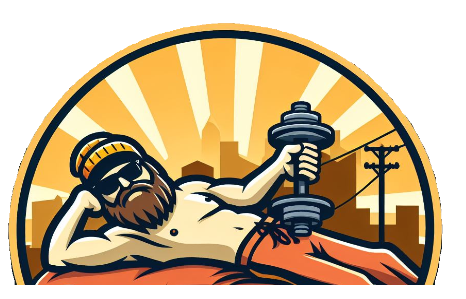Moving Meditation
Tai Chi, often referred to as “moving meditation,” has roots buried deep in ancient China. It traces back centuries, mingling with the philosophies around Taoism and martial arts. The aim? Finding harmony in life’s balance, a philosophy that resonates with its slow, intentional movements.
Unlike the high-kicks and rapid transitions in many martial arts, Tai Chi takes a slower, more focused approach. You might think of it as a graceful dance fused with a surprisingly powerful core workout. This makes Tai Chi attractive to people of all ages and fitness levels who are either looking for a gentle way to exercise or a method to unwind.
Many beginners are lured by Tai Chi’s gentle, flowing choreography that contrasts sharply with the hustle and bustle of everyday life. It’s accessible and forgiving, minimizing physical strain while rewarding practitioners with a sense of peace and clarity.
Understanding Tai Chi as an all-encompassing wellness tool highlights its versatility beyond just fitness. Whether you’re looking for physical, mental, or even spiritual benefits, Tai Chi offers a holistic approach that caters to what you need during practice.
Getting Started.
Basic Tai Chi Movements and Techniques
Finding the right spot is key. Think about your living room, a quiet corner in a park, or even a terrace with a view. All you need is a space that gives you enough room to stretch out those limbs without bumping into anything.
Understanding the foundation sets the pace for progress. The basic stances like Commencing Posture or Single Whip serve as building blocks. It’s about moving with intention, focusing on fluidity and control. Don’t focus on being perfect, but rather on understanding the essence of each movement.
Posture is everything here. Keep your spine straight, let your shoulders relax, and align your body naturally. Breathing, on the other hand, should be steady and deep. Inhale the calm, exhale the stress. Your breath should guide your movements, keeping them smooth and steady.
Before diving into the practice, warm-ups are crucial. Think gentle shoulder rolls or ankle twists—simple moves to loosen up and get the blood flowing. It’s about easing into the flow, not rushing into it.
Physical and Mental Benefits.
Transform Your Health
Tai Chi isn’t just a string of graceful moves. It’s a full-on health transformation. Imagine better balance with each step you take. Those gentle shifts from one leg to the other work wonders on your stability and flexibility.
Dealing with stress becomes easier. The peaceful rhythm of Tai Chi helps in lowering stress hormones and upping endorphins, the body’s happy hormone. It’s like giving your mind a mini-vacation during every session.
Breathing better isn’t an overstatement here. Tai Chi encourages deep, conscious breathing, promoting healthier lung function and even positively impacting your heart health.
There’s a natural meditative element built into its practice. The focus on movement and breath can calm an anxious mind, helping combat anxiety and depression. This gives your mental health a major boost, replacing chaos with clarity.
You’re very welcome! Here’s a more detailed breakdown of each Tai Chi exercise while we wait for the images.
Tai Chi Practices for Beginners
1. Cloud Hands (Yun Shou)
This movement mimics the act of moving your hands through clouds and improves coordination, balance, and relaxation.
Step-by-Step Instructions:
- Start in Wu Ji posture (feet shoulder-width apart, knees slightly bent).
- Raise your right hand to chest level with your palm facing inward, as if gently holding a ball. Your left hand stays near your waist, palm facing downward.
- Shift your weight to your right leg and slightly turn your torso to the right.
- As you shift weight to the left, switch hand positions—lower your right hand and raise your left hand in a smooth, circular motion.
- Imagine your hands floating effortlessly through a cloud as you continue this movement side to side.
- Repeat for 6–10 breaths, ensuring smooth transitions.
🔹 Tip: Keep your shoulders relaxed and let your movements be soft and fluid.
2. Parting the Wild Horse’s Mane (Ye Ma Fen Zong)
This move mimics a gentle parting motion and enhances leg strength, coordination, and focus.
Step-by-Step Instructions:
- Begin in a neutral stance, feet shoulder-width apart.
- Step forward with your left foot and shift your weight onto it.
- Hold an imaginary ball in front of your chest with your left hand on top and right hand underneath.
- Extend your right hand forward and slightly downward as if parting the mane of a horse.
- As you shift your weight back, switch hands and step forward with your right foot, repeating the motion.
- Perform the movement slowly for 6–8 repetitions, keeping your breath steady.
🔹 Tip: Keep your knees slightly bent and move with a sense of floating.
3. Grasp the Sparrow’s Tail (Lan Que Wei)
A fundamental Tai Chi move that develops balance and flow.
Step-by-Step Instructions:
- Stand with feet shoulder-width apart, hands relaxed.
- Step forward with your left foot and hold an imaginary ball in front of your chest.
- Extend your right hand outward in a pushing motion.
- Slowly pull your hand back toward your waist, as if drawing energy inward.
- Step forward with your right foot and repeat the movement on the other side.
- Continue for 6–8 repetitions, feeling the flow of energy with each movement.
🔹 Tip: This movement is often considered one of the “building blocks” of Tai Chi, so take your time mastering it.
4. White Crane Spreads Its Wings (Bai He Liang Chi)
This graceful movement helps improve flexibility, posture, and focus.
Step-by-Step Instructions:
- Begin with feet together and arms relaxed.
- Shift your weight onto your right leg and lift your left leg slightly off the ground.
- Raise your left hand above your head while extending your right hand downward, palm facing forward.
- Imagine the gentle, sweeping motion of a crane’s wings as you hold the posture.
- Slowly lower your hands and switch sides, repeating the movement.
- Continue for 5–6 slow breaths on each side.
🔹 Tip: If balancing is difficult, keep your raised foot lightly touching the ground until you feel comfortable.
5. Embrace the Tree (Bao Zhuang Gong)
A standing meditation pose that enhances breath control and relaxation.
Step-by-Step Instructions:
- Stand with your feet shoulder-width apart, knees slightly bent.
- Raise your arms in front of your chest, as if embracing a large tree.
- Keep your fingers slightly apart and shoulders relaxed.
- Breathe deeply through your nose, expanding your abdomen as you inhale.
- Hold the position for 1–2 minutes, keeping your mind calm and focused.
- Slowly lower your arms and return to a relaxed stance.
🔹 Tip: This is a great practice for beginners to develop mindfulness and Tai Chi breathing techniques.
Developing a Routine.
Integrating Tai Chi into Daily Life
Consistency is key, but remember, it’s not about logging long hours. Even a short 10-minute session can make a difference in your day. Find a time that suits you, whether it’s sunrise or a quiet evening moment, and stick to it.
Progress matters as well. Keep track of your journey, no matter how small the steps. Maybe you held a stance a little longer or remembered an entire sequence without a hitch. Celebrate these wins to keep motivation high.
My Wrap
There are endless resources available to support your practice. Dive into beginner-friendly books, enroll in a local class, or browse online videos for step-by-step guides. These resources can deepen your understanding and provide structure to your sessions.
Also, joining a Tai Chi community can be hugely beneficial. Find group classes or online forums where you can share insights, ask questions, and feel a sense of belonging. Engaging with others in this journey can bring new perspectives and extra encouragement.
Follow me on YouTube for more “prophetic” insight and a bit of a laugh at the same time.
Steve

Some links on this site may be affiliate links, and if you purchase something through these links, I will make a commission on them.
There will be no extra cost to you and, you could actually save money. Read our full affiliate disclosure here.

